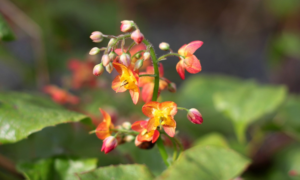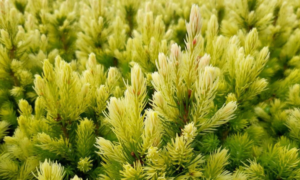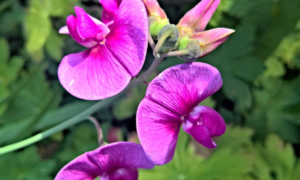We independently research, review, and recommend the best products. If you buy something through our links, we may earn a commission. Learn more.
Winter is often a bleak, drab time for gardeners, with few blooms to enjoy. So, it’s wonderful that winter heather offers a much-needed burst of colour when the world around us turns grey. It’s long been a staple of UK gardens due to its hardy nature and vibrant flowers, making it an obvious choice for winter. But how do you grow and care for winter heather? And what varieties are available? That’s what we’re here to discuss, among other common questions.
Contents
What is winter heather, and why should you grow It?
Winter heather is an evergreen shrub that belongs to the Ericaceae family. It’s native to the UK, and typically found growing wild in woodlands and overgrown areas. Winter heather is prized for its colourful foliage and long-lasting blooms. Its low maintenance requirements make winter heather a fantastic option for green thumbs wanting to find a hardy plant that can power through the cold and add vibrancy to an otherwise frost-bitten space.

Types of winter heather
There are many different types of winter heather, each with unique characteristics. From the vibrant hues of Erica carnea to the delicate beauty of Erica x veitchii, there’s a winter heather to suit every gardener’s taste. Erica carnea has delicate, pink or white flowers that bloom from November to March, while Erica x darleyensis produces larger, more striking blooms in shades of pink, mauve, or red. Calluna vulgaris, also known as common heather, is a hardy plant with delicate purple, pink, or white flowers that bloom from August to September.
When selecting winter heather, consider the size of your garden and the surrounding growing conditions. For instance, a south-facing location with well-draining soil is ideal, as winter heather thrives in sunny-to-partially shaded sites.
Winter heather key facts:
- A hardy evergreen plant native to the UK
- Grows in hardiness zones 4-9
- Grows to 6-12 inches tall
- Spreads to roughly 18 inches wide
- Prefers well-drained, acidic soils with a pH between 4.5-6
- Requires partial-to-full sun exposure (at least 4 hours of direct sunlight per day)
- Drought-tolerant and can withstand periods of dry weather
- Blooms in late autumn to early winter
- Produces vibrant pink, purple, or white flowers
- Pruning is recommended once a year
- Enjoys organic compost or slow-release fertiliser
- A popular choice for rock gardens, woodland gardens, and as groundcover in larger landscapes
Planting and caring for winter heather
As we know, winter heather is a hardy plant that thrives in well-drained soil. Once you’ve found these spots, the hard work is over, as planting winter heather is simple enough that even novice gardeners can get it going.
Simply space the plants about 30-45 cm apart. Water regularly to keep the soil damp, and mulch around the base of the plant to conserve moisture and control weeds. In late spring, trim the winter heather to encourage new growth, and remove dead flowers after blooming to keep the plant looking its best.
You’ll need to check for pests and diseases, especially if it’s grown in damp or poorly drained soil. Some of the most common pests that affect winter heather include the heather beetle, which feeds on the leaves and stems. There’s also heather fly, which causes yellow patches on the foliage. To address these pests, remove infested plants and treat the soil with an appropriate pesticide.

The best fertiliser for winter heather
Winter heather benefits from regular feeding when it’s beginning to grow, especially in the early spring. I recommend using an acid-based compost, such as a slow-release azalea fertiliser or a top-dressing of well-rotted manure. Avoid using a fertiliser high in nitrogen, as this will encourage foliage growth at the expense of flowers.
How to creatively use winter heather
Winter heather is a versatile plant used in various garden designs, whether you want to create a low-maintenance rock garden, a colourful flower bed, or a stunning border. Its low-growing habit makes it ideal for use as a ground cover, and its colourful foliage and long-lasting blooms make it a great addition to any winter garden. I personally like to use it as a border to create a striking contrast against evergreens.
The plant’s long-lasting blossoms and delicate texture make it a popular choice for dried flower arrangements. You could even take advantage of the winter heather’s vibrant colours by incorporating them into wreaths and garlands.
Winter heather in summary
- Planting: When planting winter heather, choose a spot that gets plenty of light but is protected from harsh winds. Heather also loves well-drained soil, so if your garden tends to be damp, consider planting in raised beds or using a soil-based compost.
- Watering: Winter heather is surprisingly drought-tolerant, but it will perform better with good watering now and then. Give your plants a good drink if you’ve had a dry spell.
- Pruning: To keep your winter heather looking its best, it’s a good idea to give it a gentle pruning every year. Simply remove any dead or yellowing leaves. This will encourage fresh new growth and ensure that your winter heather looks its best for years to come.
- Feeding: While winter heather isn’t particularly demanding, a good dose of organic compost or slow-release fertiliser will help it to thrive.
And there you have it, my friends. A few simple tips to help you get the most from your winter heather. It’s a plant that’s easy to love and even easier to care for, so why not give it a try in your garden this year? I promise you won’t be disappointed!






